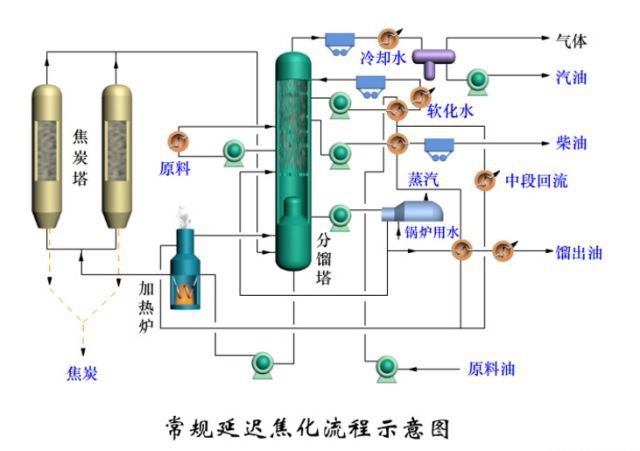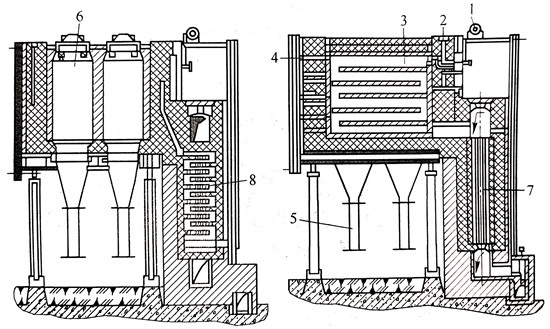【Technical Information】Factors Affecting Concurrent Pot Calciner Quality & Improvement Measures

【Technical Information】Factors Affecting the Quality of Concurrent Pot Calciner and Improvement Measures
The pot calciner is one of the essential calcining equipment for carbon production, known for its advantages such as stable calcining quality, minimal material oxidation loss, high thermal efficiency, and not requiring additional fuel for calcining delayed petroleum coke. This article primarily explores the factors influencing the quality of calcined petroleum coke in a concurrent pot calciner and summarizes the ways to enhance calcined petroleum coke quality in concurrent pot calciners for reference by enterprises.
I. Factors Affecting Calcining Quality
The primary purpose of calcination is to remove volatile components and moisture from raw materials, increase the material density and mechanical strength, and improve the electrical conductivity and chemical stability of the raw materials. To address variations in calcined petroleum coke quality across different batches, it is essential to analyze the factors influencing calcination quality and take effective measures.
(A) Factors Related to Raw Materials
Currently, delayed petroleum coke used in the production of anodes for aluminum production in China generally exhibits characteristics such as fine natural particle size, loose particle structure, unstable volatile content, and elevated trace element content.
1. Particle Size Impact
Fine particle sizes of petroleum coke can lead to coke agglomeration and blockages within the pot calciner during calcination. This can hinder the smooth release of volatile components and affect calcined petroleum coke quality. Additionally, fine particle sizes result in higher coke burn-off rates, lower actual yields, and increased operational costs.
2. Effect of Volatile Content
The volatile components generated during the calcination of petroleum coke are the primary fuel for pot calciners. A low volatile content can lead to insufficient fuel, decreased calcination temperature, inadequate calcination, and, consequently, a negative impact on calcined petroleum coke quality. Conversely, excessively high volatile content can cause blockages in the kiln, difficulties in material discharge, and even collapse of the kiln due to high temperatures in the combustion zone.
3. Impact of Moisture Content
Petroleum coke contains a certain amount of moisture. However, excessive moisture can not only reduce furnace temperature but also lead to coke agglomeration within the pot calciner.
4. Effect of Trace Element
Elevated sulfur content not only pollutes the environment and increases the pressure on environmental protection facilities but can also result in product bloating, internal cracking, reduced coke block strength, and increased resistance. Additionally, high levels of vanadium, iron, silicon, and other elements can cause slagging and blockage in the electrolytic cell, further affecting aluminum quality.

(B) Charging and Discharging Factors
The pot calciner is charged with materials from the top and discharges calcined materials from the bottom through a sealed discharge mechanism. Timely and appropriate charging and discharging ensure a stable amount of volatile components burning in the combustion zone, maintaining relatively stable kiln temperatures and, consequently, stable calcined petroleum coke quality. Excessive or insufficient charging and delayed discharging can lead to unstable volatile component combustion in the combustion zone, resulting in fluctuating kiln temperatures, which negatively impact calcined coke quality and kiln lifespan.
(C) Calcination Temperature Factors
The quality of calcined petroleum coke primarily depends on the calcination temperature and the duration of high-temperature exposure. Inadequate calcination temperatures can prevent petroleum coke from contracting sufficiently, leading to product deformation or cracking. Conversely, excessively high calcination temperatures can reduce material density and mechanical strength. Hence, maintaining an appropriate calcination temperature ensures quality and extends the service life of the calcination equipment. Based on production experience, the calcination temperature for petroleum coke is generally between 1250-1380°C.
(D) Kiln Wall Coking and Volatile Channel Blockage Factors
In a pot calciner, volatile components released during calcination are collected and channeled through the volatile component channel into the combustion zone. Due to lower temperatures in the channels compared to the combustion zone, tar can accumulate and solidify in these channels, leading to clogging. Similarly, coke can accumulate on the kiln wall and harden over time, making it challenging to manage. These deposits can hinder the smooth flow of volatile components into the combustion zone, affecting the heat transfer between the kiln and the raw materials, lowering calcination temperatures, and impacting product quality.
II. Improvement Measures
(A) Control Raw Material Quality and Composition
Strict quality control of petroleum coke is key to preventing fluctuations in calcined petroleum coke quality. Enterprises should implement a rigorous quality management system, conduct comprehensive sampling and testing of every batch of petroleum coke used in production, including testing for moisture content, ash content, volatile content, fixed carbon, particle size distribution, trace elements, and more. Additionally, proper storage and labeling of petroleum coke from different manufacturers and batches facilitate blending for consistent production. Rational blending based on factors such as ash content, trace elements, particle size, and volatile content can stabilize the physicochemical properties of various products and ensure smooth operation of the calciner, guaranteeing both production yield and quality.
(B) Implement Automated Control for Charging and Discharging
Implement computer and PLC-based automated control systems for the charging and discharging system of pot calciners, ensuring timely and accurate material charging. Transition from intermittent discharge to continuous discharge to minimize material stagnation in the kiln and reduce kiln wall coking issues. Continuous discharge can be achieved through variable frequency motors by adjusting the motor speed to control kiln output.
(C) Optimize Calcination Temperature Control
Maintain appropriate temperature control in the kiln to prevent damage to refractory bricks and extend equipment lifespan. Control temperatures at various levels in the kiln, typically measured at the first, third, and eighth layers. Control the first-layer temperature above 1200°C and the third-layer temperature within the range of 1250-1380°C to ensure proper calcination. The eighth-layer temperature should ideally be maintained between 1000-1100°C, facilitating material cooling and reducing the high-temperature pressure on kiln clay bricks and cooling water jackets, thus prolonging the kiln's service life.
(D) Implement Regular Kiln Wall Cleaning and Volatile Channel Maintenance
Establish a regular maintenance system for cleaning volatile channels and emptying kiln walls. Strictly adhere to the maintenance schedule, cleaning volatile channels, volatile component overflow outlets, and lower kiln openings every 20 days to maintain unobstructed pathways and ensure smooth overflow of volatile components. Clean kiln walls every 2 months to keep them clean and maintain efficient heat transfer in the kiln. Traditional kiln wall cleaning involves stopping material charging for all kilns, continuing material discharge until it reaches the first layer, then stopping material discharge, opening all furnace surface openings, and using air to oxidize coked deposits. After some time, these deposits can be quickly removed using tools. However, traditional kiln wall cleaning methods are time-consuming and can affect calcined petroleum coke quality. Implementing a "group-based kiln wall cleaning" approach can reduce quality fluctuations. This approach involves cleaning one group of kilns (four kilns) during a specific period. Once deposits are treated, volatile components are directed from adjacent volatile channels into the group's kilns using a connecting flue board. This rapidly raises kiln temperatures to the required levels. The process is then repeated for each group, ensuring calcined petroleum coke quality remains unaffected. Contact us for more guidance on calcination technology.
No related results found









0 Replies